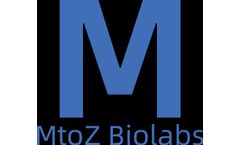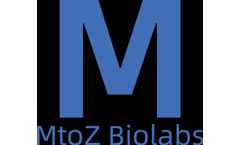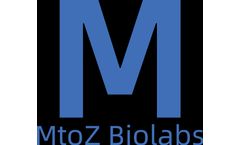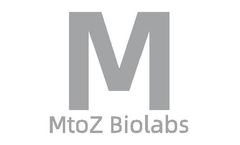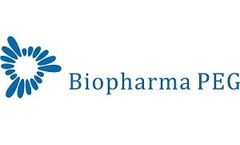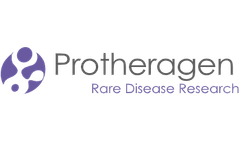Refine by
Pharmacokinetics Articles & Analysis: Older
71 articles found
Pharmacokinetics (PK) and pharmacodynamics (PD) are two fundamental pillars in the field of pharmacology and drug development. ...
One of the earliest approved liposomal drugs was Doxil, a PEGylated liposomal formulation of doxorubicin, which demonstrated improved pharmacokinetics and reduced cardiotoxicity compared to the free drug. Subsequent developments have focused on optimizing liposome composition and design to enhance stability, drug loading, and targeting capabilities. ...
Clinical trials are the backbone of modern medicine, responsible for bringing innovative, safe, and efficient treatments to market after rigorous testing and evaluation. However, the conventional process of conducting these trials has often been long, expensive, and fraught with inefficiencies¹. The advent of predictive analytics is reshaping the landscape of clinical trials, ushering in a ...
They have shown promise in improving drug efficacy, selectivity, and pharmacokinetic properties compared to natural peptides. Among the various aspects of peptidomimetic studies, peptidomimetic drug screening is a powerful method to address many needs. ...
This article explores the intricacies of Pharmacokinetic and Toxicokinetic studies and their critical role in PK/TK studies. Pharmacokinetics (PK) and Toxicokinetics (TK) studies are virtues of a broader scientific discipline called pharmacology. ...
Pharmacokinetic characteristics are composed of and determined by drug absorption, distribution, metabolism and excretion. The structure, physiological properties and pharmacokinetic characteristics of monoclonal antibodies are different from those of traditional small molecule drugs. ...
The presence of glycosylated impurities can not only change the chemical properties of drugs, such as solubility and stability, but also affect the biological properties of drugs, such as bioavailability and pharmacokinetics. Moreover, some glycosylated impurities may have potential toxicity, posing a threat to human health.How to Detect Glycosylated ...
These tests can help determine effective doses and potential side effects, thereby guiding the design of clinical trials.4. Pharmacokinetics and Pharmacodynamics (PK/PD) AnalysisStudying the absorption, distribution, metabolism, and excretion characteristics of ADC in the body, as well as the relationship between drug concentration and efficacy, is the basis for understanding its ...
PEGylation increases the molecular size and alters the pharmacokinetic properties of these drugs, reducing renal clearance and proteolytic degradation. ...
Glycosylation analysis is crucial for ensuring the safety, efficacy, and consistency of drugs, as the structure and composition of glycans directly influence the bioactivity and pharmacokinetic properties of antibody drugs.Importance of Antibody Drug Glycosylation Analysis1. ...
Safety AssessmentIncluding toxicity tests, immunogenicity tests, etc., to evaluate potential risks to the human body.5. Pharmacokinetic and Pharmacodynamic StudiesUnderstanding the distribution, metabolism, excretion process, and pharmacological properties of ADCs in the body.Antibody-Drug Conjugates Assay ...
In addition to total antibody analysis, pharmacokinetic studies are also needed to monitor a variety of analytes, including conjugated-antibody, antibody-conjugated drug, nonconjugated drug, and toxin-related metabolites. ...
Nanobodies can be conjugated to these therapeutic agents to enhance their stability, improve their pharmacokinetics, and facilitate their delivery to specific tissues. This approach has been particularly useful in the development of gene therapy and RNA-based therapeutics, where efficient delivery to target cells is crucial for therapeutic success. ...
This results in reduced aggregation, lower immunogenicity, better pharmacokinetics, longer circulation time, and less toxicity. Products include: mPEG36-NH2 (CAS NO.: 32130-27-1) OH-PEG6-COOH (CAS NO.: 1347750-85-9) CBZ-NH-PEG3-COOH (CAS NO.: 1310327-18-4) OH-PEG9-OH (CAS NO.: 3386-18-3) PEGs as PROTAC Linkers PEG linkers are the most common in PROTAC molecules. ...
In vitro studies involve using cell cultures to test the drug release and cytotoxicity, while in vivo studies involve animal models to assess the biodistribution, pharmacokinetics, and therapeutic outcomes. Summary Nanoformulation represents a significant leap forward in drug delivery technology, offering substantial advantages such as improved bioavailability, targeted delivery, ...
This knowledge can then be used to guide the design of new molecules, allowing for the iterative optimization of potency, selectivity, and pharmacokinetic properties. The success of drug design ultimately hinges on the seamless integration of computational modeling, structural biology, and synthetic chemistry. ...
Hamburger pentapeptide analog, Cys-gly-tyr-gly-pro-lys-lys-lys-arg-lys-val-gly-gly), and small molecules can alter the pharmacokinetic and physiological properties of these substances in vivo, thereby imparting some of the properties of PEG to these compounds. ...
This includes studies that determine the pharmacokinetics of antibodies (how they are absorbed, distributed, metabolized, and excreted by the body), pharmacology (how they affect the body), and toxicology (how they may beget detriment). ...
Usually, the drug development process of small molecule drugs includes identification and validation of initial targets, screening of lead compounds, method development and modeling, pharmacokinetic characterization, preclinical safety assessment, selection of preclinical drug candidates, and clinical studies. ...
Additionally, de novo designed antibodies can be engineered to overcome limitations of naturally occurring antibodies, such as cross-reactivity or suboptimal pharmacokinetic properties. As the field of protein and antibody development continues to evolve, the integration of affinity maturation, immunogenicity assessment, and de novo design is paving the way for unprecedented ...






